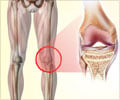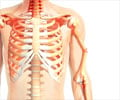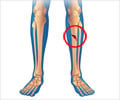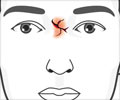A new report reveals that approximately 22 million women and 5.5 million men in 27 member states of the European Union (EU27), have osteoporosis.

Professor Juliet Compston, Chair of the European Osteoporosis Consultation Panel, stated "During the past two decades a number of advances have been made, including a new range of effective medications for treatment and prevention, wider availability of practice guidelines, and the development of risk assessment models which help us to better identify high-risk individuals. Nevertheless, a significant gap remains between the number of individuals who are treated compared to the proportion of the population that could be considered eligible for treatment based on their fracture risk."
Osteoporosis is a progressive chronic disease that causes bones to become fragile and weak. People with osteoporosis are highly susceptible to fragility fractures, even as a result of a minor fall. Fractures can have a serious impact on the sufferer, leading to pain, long-term disability or even premature death. In 2010, 43,000 deaths were causally related to fractures - 50 per cent following hip fractures.
Further key findings of the report include:
- The health economic costs are enormous and growing. The total annual cost resulting from new and prior fragility fractures is €37 billion with: 66 per cent attributed to the cost of caring for new fractures; 29 per cent for long-term fracture care; and only 5 per cent for pharmacological prevention. These costs are expected to increase by 25 per cent from 2010 to 2025.
- Of the 3.5 million new fragility fractures sustained, there were approximately 620,000 hip fractures, 520,000 vertebral fractures, 560,000 forearm fractures, and 1,800,000 other fractures. The number of fractures is expected to increase to 4.5 million in 2025.
- The health burden is immense. New fractures accounted for an estimated 26,300 life-years lost and 1.18 million quality-adjusted life years lost. The value of quality of life years lost totals €60.4 billion.
- A large treatment gap exists. The majority of individuals who have sustained an osteoporosis-related fracture, or who are at high risk of fracture, are untreated even though it is cost-effective to provide treatment.
- Treatment uptake of osteoporosis drugs increased considerably between 2001 and 2011, however, more recently a slight decrease has been observed.
- In many countries there is suboptimal availability of DXA machines, the scanners used to diagnose and monitor osteoporosis.
- Although approved medications are widely available, full reimbursement of osteoporosis medications is only provided in seven EU member states.
- Compliance and persistence with osteoporosis treatment is poor - some 50 per cent of patients either don't follow or simply discontinue prescribed treatment within one year.
- A first fracture doubles the risk of suffering another. Nevertheless, a minority of clinics in Europe has established fracture liaison services to systematically diagnose and treat fracture patients.
Professor John A. Kanis, President, IOF, urged European health authorities to make provision in their healthcare budgets to address the increase in fractures and associated disability. He stated, "By 2025, in little more than a decade, the population aged 50 years and over will increase by 20 per cent, with even larger increases in the number of elderly. Health care systems, already strapped for resources, will have to cope with millions of additional patients suffering from costly and disabling age-related musculoskeletal diseases."
He emphasized that prevention of fractures is clearly the only way forward. "Health care authorities must implement national prevention and treatment guidelines, establish fracture liaison services to identify high-risk patients, facilitate reimbursement of cost-effective medication and DXA scans, and take measures to improve adherence to medications by patients."
Advertisement















